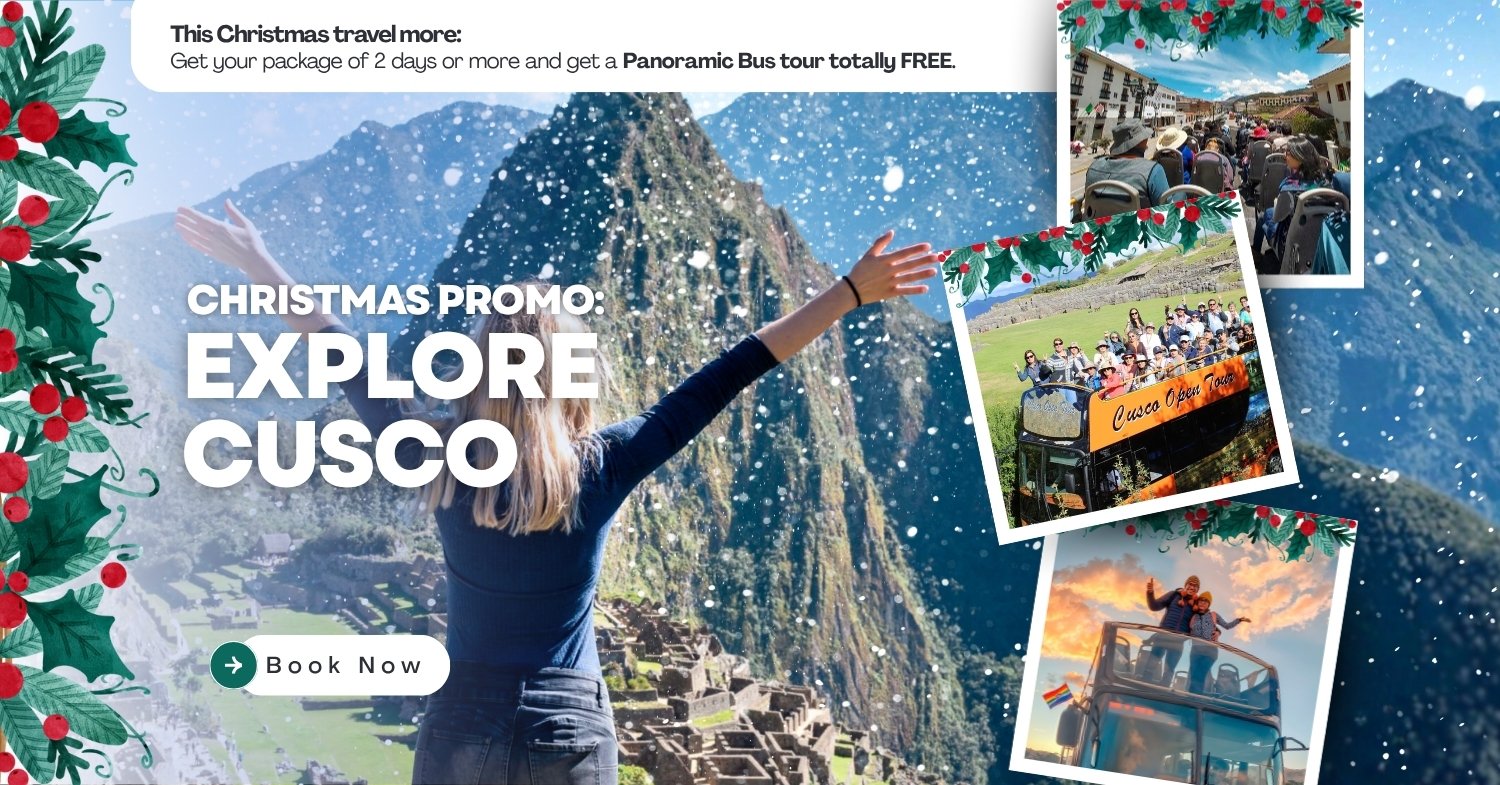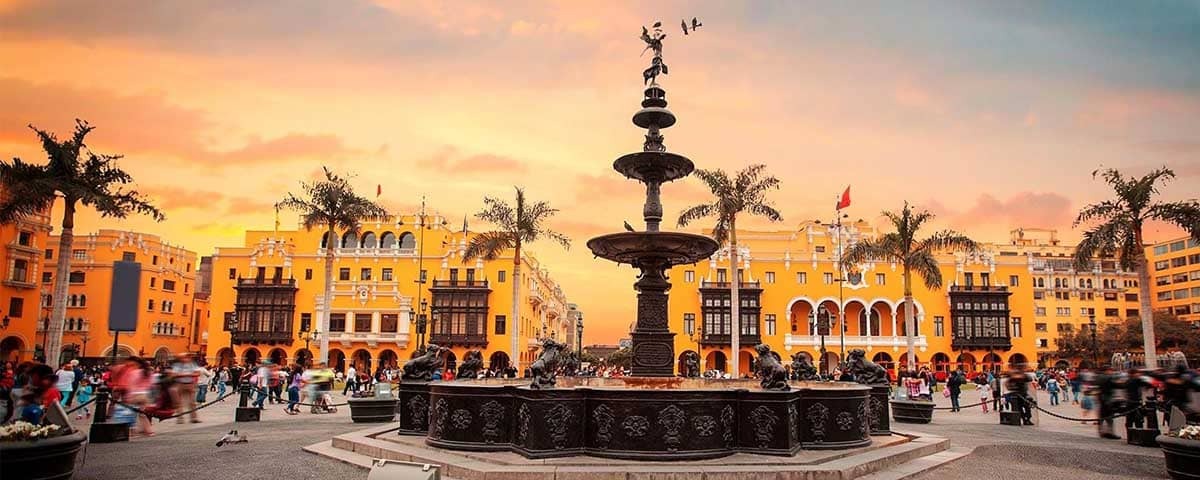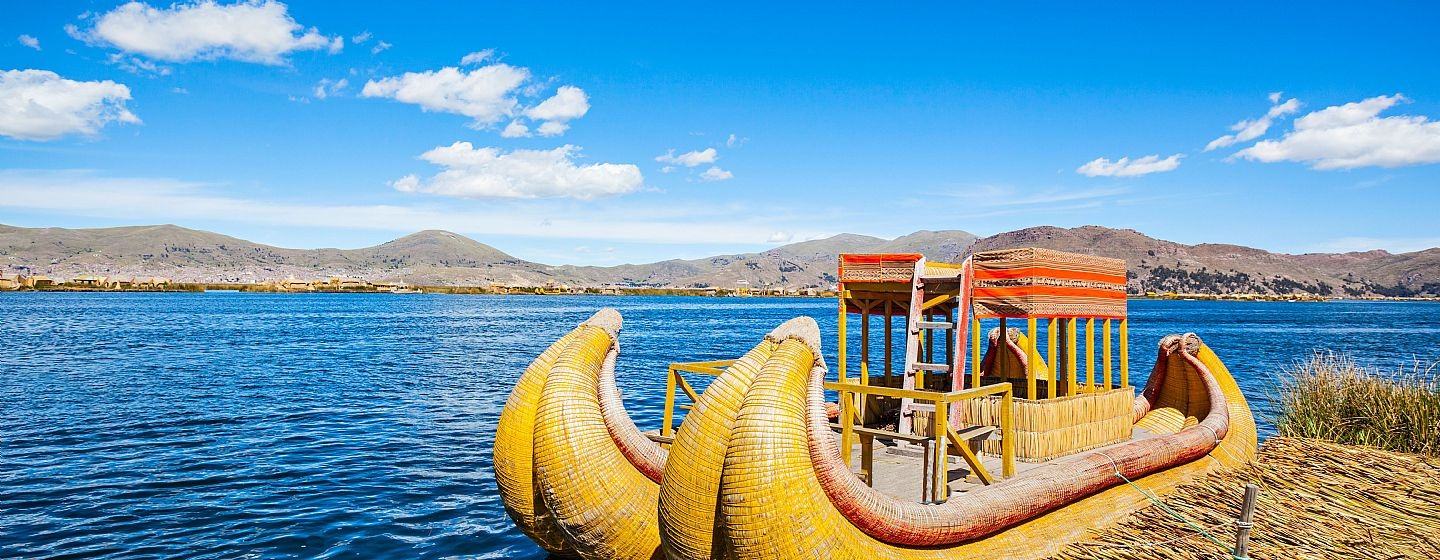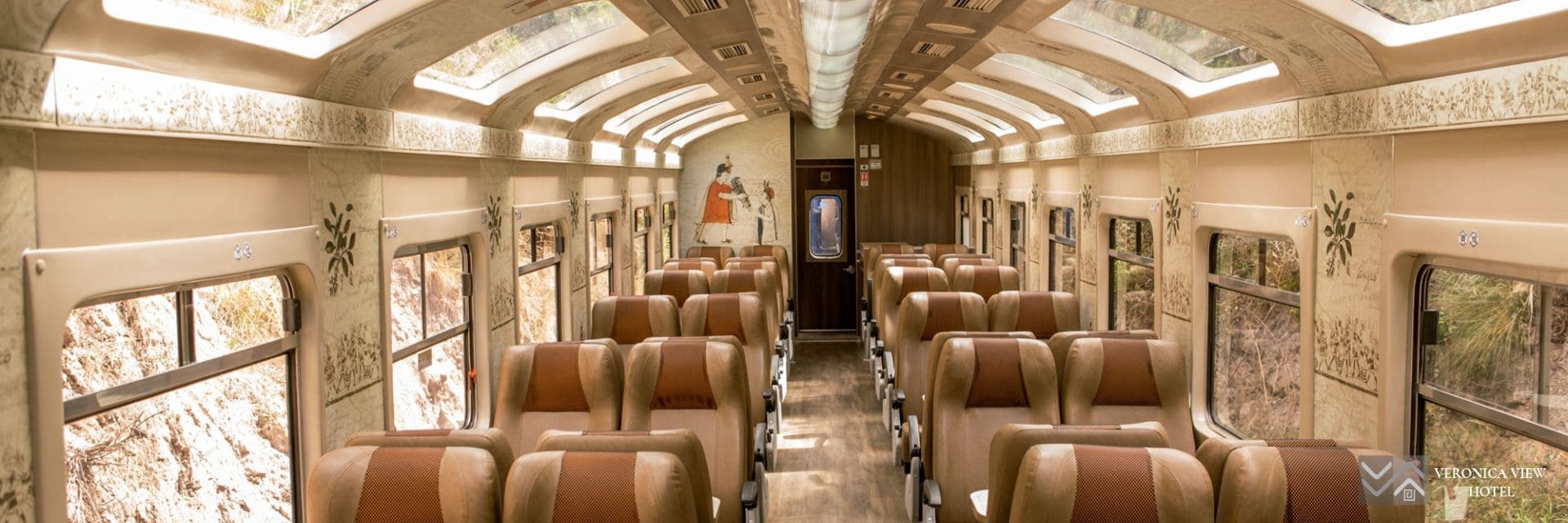

The Inca Empire left a deep mark on the mysterious lands of Peru, attracting thousands of travelers every year who seek to discover its legacy and tour its ancient constructions. Machu Picchu and the Sacred Valley are the most visited destinations, but the country offers much more: from its extensive coast of more than 3,200 kilometers to the thousands of kilometers of Amazon rainforest.
The majestic Andes mountain range crosses the Peruvian territory, dividing the country into three natural regions: the arid coast, the Andean highlands, and the tropical jungle that covers more than 60% of the territory. In each of them you can find unique landscapes, endemic species, and a surprising variety of climates.
Peru not only dazzles with its nature, but also with its history. Vestiges of ancient cultures like the Nazca Lines, Chan Chan, and Chavín de Huántar are complemented by a visit to Machu Picchu. In turn, monasteries, colonial churches, and traditional towns reflect centuries of cultural mixing, making the country a multicultural destination.
Upon arriving in Peru, travelers encounter some of the most impressive landscapes in South America: from the high mountains of the Andes to the sacred valley and the Amazon rainforest. Treks along ancient Inca paths and contact with communities that still speak Quechua allow you to experience up close traditions that have lasted for centuries.
With a diverse population and a rich cultural heritage, Peru combines Amerindian and Spanish influences that are reflected in its art, gastronomy, and lifestyle. This cultural fusion is perceived both in large cities and in small Andean towns, where the history, hospitality and authenticity of the Peruvian people make every visit an unforgettable experience.

Peruvian gastronomy is one of the most outstanding in the world, famous for its fusion of flavors and its multicultural heritage. Pre-Inca, Spanish, African, Chinese, Japanese, and Italian influences converge in it, giving rise to a varied cuisine full of nuances.
Ceviche, prepared with fresh fish marinated in lime juice, is considered the national dish and a symbol of the Peruvian coast. In the highlands, cuy (guinea pig) is the Andean tradition, while throughout the country Inca Kola, with its unmistakable sweet flavor, remains the most popular drink and a true cultural icon.

Traveling through Peru is discovering a territory full of natural and cultural records:
With so much to see and do, planning a trip to Peru can seem overwhelming. The key is to prioritize experiences: combining culture, nature, and adventure. From treks on the Inca Trail to tours in the Amazon or gastronomic visits in Lima, Peru offers unique experiences that exceed any expectation.

The main airport in Peru is Jorge Chavez International Airport (LIM) in Lima. It's only about 7 miles from the city center so finding your way isn't too much of a problem; however, your options are somewhat limited. The easiest way to find a taxi booking is in the arrivals area. Make sure you agree on the fare before you start the journey and make sure you have agreed on the currency in PEN as some taxi drivers like to scam passengers and confuse them into thinking the amount be in dollars instead. Otherwise you can go by bus, but they do not enter the airport premises, you can find them about 15 minutes walk from the airport. The bus fare is incredibly cheap, but if you're not interested in taking public transport, a taxi is your best bet.
Once you're settled into your hotel and ready to explore the country, there are a few different options you can use to get around. Here are some tips:
 Expedition train to Machu Picchu
Expedition train to Machu Picchu
Lima is where most travelers start their Peru vacation, and it has much more to offer than just an airport. The city's Miraflores district sits right on the Pacific Ocean and offers shopping during the day with fun bars and clubs at night. Being so close to the sea, Lima has excellent seafood, especially its ceviche. As the town is on a cliff, you can also go paragliding.
Machu Picchu has long been Peru's most popular tourist attraction, and with good reason, as it's a spectacular monument to the Inca civilization. Most travelers take one of the trains from Pueblo Machu Picchu to the site, just make sure you book in advance as they can and sell out. Consider staying a night at Pueblo Machu Picchu before acclimating to higher altitudes.
If you don't mind taking a short flight during your stay in Peru, you can visit the Amazon Rainforest. You can enter from Iquitos or Puerto Maldonado, and while you can get there by car, the roads aren't the best and flying is the safest option. Expect fascinating wildlife, and there's even a jungle lodge to stay in.
A few hours south of Lima is the village of Huacachina, a small oasis in the middle of a large desert. Not only is it a great place to relax, but you can also go sandboarding and a fast dune buggy ride.
Visit the third-highest waterfall in the world, Gocta Falls, which has a breathtaking height. Located in the upper Amazon basin, the waterfall was only "discovered" in recent years. Legend has it that the locals kept the falls secret because they feared the wrath of the beautiful mermaid who lived there.
Most travelers to Peru book their trip with two attractions: The Inca Trail and Machu Picchu. But the lesser-known gem is Choquequirao, one of South America's best-preserved Inca cities, near Cusco. After the Spanish conquest, the Incas fled to Choquequirao. Only a third of the site has been excavated so far.
The Convent and Church of San Francisco (Iglesia de San Francisco) in Lima is an interesting place to visit. Famous for its catacombs, which house the bones of tens of thousands of corpses, the well-preserved building was built by the Spanish and dates from the late 16th century.
Drive to Puno, the city on the edge of Lake Titicaca. According to Inca legend, Manco Capac, the first Inca, rose from the lake to found the Inca Empire. The "popular capital of Peru", Puno is known for its rich artistic and cultural traditions. There are more than 300 ethnic dances. The most famous dance is the Diablada, performed during the festival of the Virgin of Candelaria in February. During this time the women dance in supplication and thanksgiving to the Virgin Mary. According to a 17th-century legend, the Virgin Mary appeared to workers at a local silver mine and later saved the town from enemies.
The Nazca Lines are considered one of the greatest mysteries in the world. The geoglyphs depicting people, animals and simple lines. To see them, a sightseeing flight is recommended. The Nazca Lines were inscribed on the UNESCO World Heritage List in 1994.
Peru offers fascinating experiences that reveal natural landscapes, historical monuments, and living cultures, captivating those who seek adventure and discovery in every corner of its territory. Get to know the most outstanding tours:
Other trips in Peru
If you want to visit Machu Picchu, we recommend you to book your Machu Picchu Entrance Tickets in advance, so you will enjoy your Vacation in Machu Picchu without any problem.